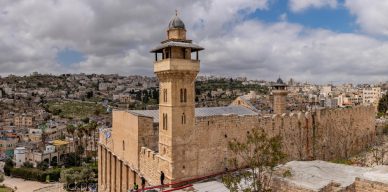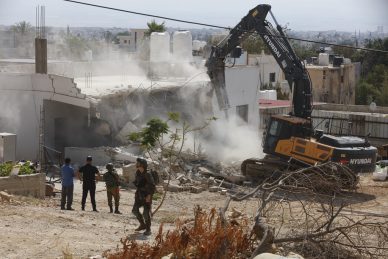RAFAH, (PIC)
With increased killings, destruction, incursions, and targeting of archaeological sites, Israeli occupation forces (IOF) continue to defy the International Court of Justice’s order to cease their aggression on Rafah.
In the wake of growing global outrage over the tents massacre in Tel Sultan, where Israeli forces killed 45 people, half of them children and women, last Sunday evening, these forces have intensified their aggression. They committed another massacre in the same area and expanded their incursion to establish a presence on the ancient Tel Zu’rub neighborhood under heavy, barbaric shelling, systematically targeting archaeological sites since the start of this genocidal war.
A PIC correspondent reported that the IOF military vehicles suddenly expanded their incursion into Rafah on Monday night and early Tuesday morning under a terrifying deluge of fire, targeting homes, hospitals, and mosques, reaching the ancient Tel Zu’rub neighborhood in the western part of the city.
Medical sources confirmed to our correspondent that 16 citizens were killed due to the heavy shelling in a city, which witnessed a bloody massacre in the tents of the displaced the previous night, resulting in 45 martyrs, most of whom were children and women.
Eyewitnesses reported that Israeli tanks positioned themselves on the ancient mound, while bulldozers began excavation and clearing operations, including within a nearby family cemetery, repeating their policy of desecrating and exhuming graves, violating the dignity of the dead.
An archaeological hill
Tel Zu’rub, used by occupation forces as a stronghold, is located in the western border area of Rafah. It contains relics from five ancient civilizations: Pharaonic, Roman, Greek, Byzantine, and Islamic.
The neighborhood is named after the Zu’rub family, one of the largest families in Rafah, residing next to the archaeological site. The name is popular among locals.
The neighborhood spans 150 dunums, overlooks the seashore, and is situated opposite the Palestinian-Egyptian border.
Since 1956, the site has suffered from illegal excavations until 2005. It had previously been violated and illegally excavated by the Israeli occupation, which used it as a military site before withdrawing from the Gaza Strip in 2005.

Civilizations passed here
Archaeological discoveries indicate remains from the Roman and Byzantine eras. Notably, a church from the Roman period with columns and capitals was found, along with 1,300 coins engraved with the goddess Athena, dating back to ancient Greek periods, as well as Roman and Byzantine coins. Numerous pottery pieces were also discovered. Many walls and arches date back to the 320 BCE period.
Most of the artifacts found in the neighborhood include pottery vessels, columns, sarcophagi, coins, and some inscribed pieces.
Some discoveries revealed a church dating to the Roman period (395-630 CE). Recent excavations by the Ministry of Antiquities in Gaza unearthed a layer from the Canaanite period (2500-3000 BCE).

Earlier excavations found pottery and other artifacts from the Canaanite period, including a famous pot bearing the Canaanite emblem of the pelican, according to reports.
Reports also confirmed that the mound contained many artifacts that were stolen, along with part of the hill’s sands, during the British and Israeli occupations of the Gaza Strip.
Since the beginning of their aggression on the Gaza Strip on October 7th, Israeli forces have targeted and destroyed dozens of archaeological sites in Gaza as part of their attempts to alter the region’s cultural heritage.














